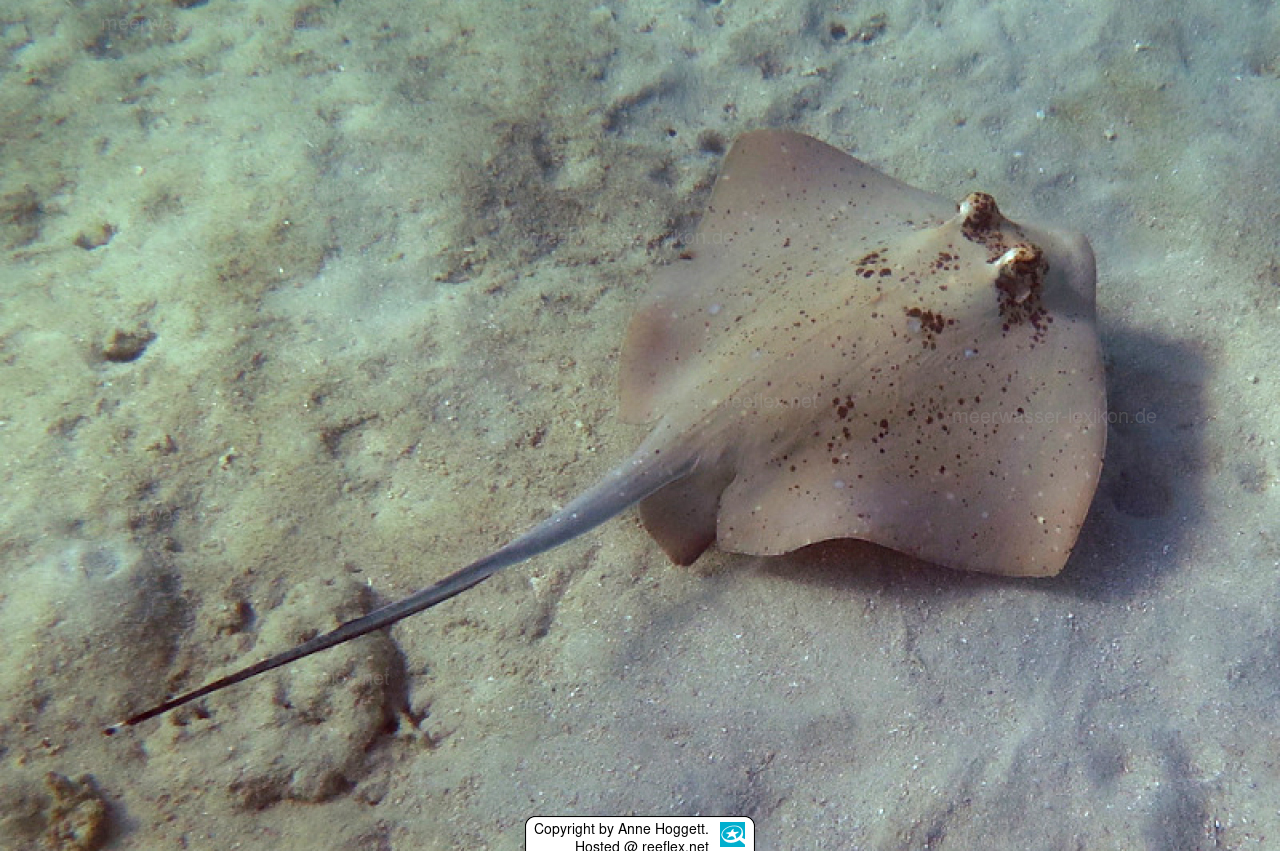Info
The Coral Sea masked ray lives benthically on shallow soft substrates, it likes to burrow so deep into the sandy bottom that only the eyes and tip of the tail are exposed and just This masked ray reaches a maximum disc width of 47 cm.
The species is viviparous, otherwise only the reproductive biology is known.
The age of maturity is 6.4 years and the maximum age is 14 years, so the generation length is 10 years.
The species name "trigonoides" refers to the fact that the pelvic fins of this species are similar to those of Trygon, i.e. "whole, not rimmed or divided" [-oides (= similar)].
Thanks to their venomous spines, these defensive rays are preyed upon by sharks and orcas.
Caution:
People have already died from stingray bites, including the well-known Australian documentary filmmaker, adventurer and zoo director of the Australian Zoo, Steve Irwin "The Crocodile Hunter" from Australia in 2006.
Even if the sting injuries are not fatal, the sting causes extremely painful and deep wounds in any case, and there is also a risk of parts of the sting breaking off in the wound and subsequent surgery becoming necessary.
The situation becomes particularly dramatic if toxins enter the body via the sting.
Occasionally beach visitors accidentally step on stingrays, some of which are buried in the sand near the beach, resulting in a painful, serious wound to the foot, so always wear bathing shoes as a minimum.
Snorkelers and divers should never swim over stingrays lying on the bottom, as the stingray can quickly fling its muscular, whip-like tail around and stab in defense.
In any case, seek medical attention immediately or seek immediate transportation to the nearest hospital.







 Dr. Anne Hoggett, Australien
Dr. Anne Hoggett, Australien











